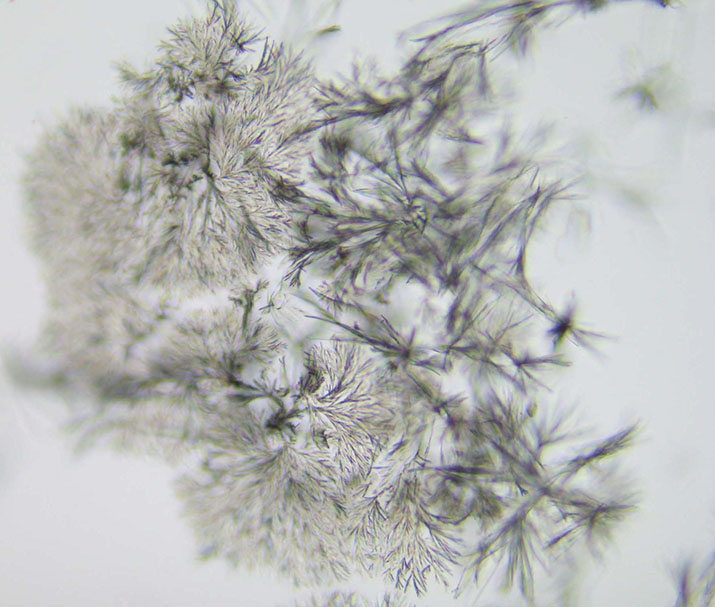The new drug testing method helping get criminals off the streets sooner
Oct. 5, 2017
 |
| Photo: A test showing heroin microcrystals. The Bureau of Criminal Apprehension found that microcrystal drug testing reduces lab turnaround time from four months to two weeks, and aims to offer it to the entire state. |
The sooner a drug criminal can be taken off the streets, the better it is for everyone. For those struggling with addiction, getting them off the streets sooner also means getting them into treatment sooner. But sometimes investigations can take time, especially if they’re drug-related.
One of the most time-consuming parts of any drug case can be waiting for the results to come back from the lab. In 2011, the Bureau of Criminal Apprehension (BCA) Forensic Science Laboratory processed a total of 4,043 drug case submissions statewide; by 2016, that number had jumped to 7,007, with a projected 8,700 for this year.
And although the sheer number of cases can add to processing time, so can the testing method. Microcrystal testing provides a fast and inexpensive alternative to the standard method known as gas chromatography-mass spectrometry (GCMS). Microcrystal testing takes about one-eighth of the time to perform as its instrumental counterpart. It became clear to the BCA that Minnesota law enforcement needed a more economical way of testing drugs that would shorten the processing time, which is where microcrystal testing comes in.
Microcrystal tests for cocaine, methamphetamine, and heroin were selected for validation by the BCA laboratory because, collectively, they account for 70 percent of the drugs identified by the lab.
When one of these drugs is introduced to the microcrystal test, highly specific crystals associated with those specific drugs form. BCA testing and validation supported the use of a combination of microcrystal tests, visual observations, and color tests to provide a strong indication of the presence of a controlled substance.
Once the BCA validated the microcrystal testing scheme, it was time to do a real-world pilot to find out of it really would improve turnaround time. The pilot began in Hennepin County in March 2016. At the time, Hennepin County was backlogged with 700 cases and a BCA testing turnaround time of over four months. But by using microcrystal testing on Hennepin County cases, the BCA has reduced the lab turnaround time to about two weeks for cases that qualify. This made it possible to have drug testing results available before the first court appearance, drastically decreasing the need for further hearings and legal delays.
Now that they know microcrystal testing can indeed help move cases along in the criminal justice process, the BCA has expanded this testing to cases submitted by several other counties in Minnesota. The ultimate goal is to offer this testing procedure for drug cases statewide – and Minnesota is the first state in the nation to do so.
Microcrystal testing is helping the BCA help law enforcement to get criminals off the streets and those struggling with addiction into recovery faster than ever before.

